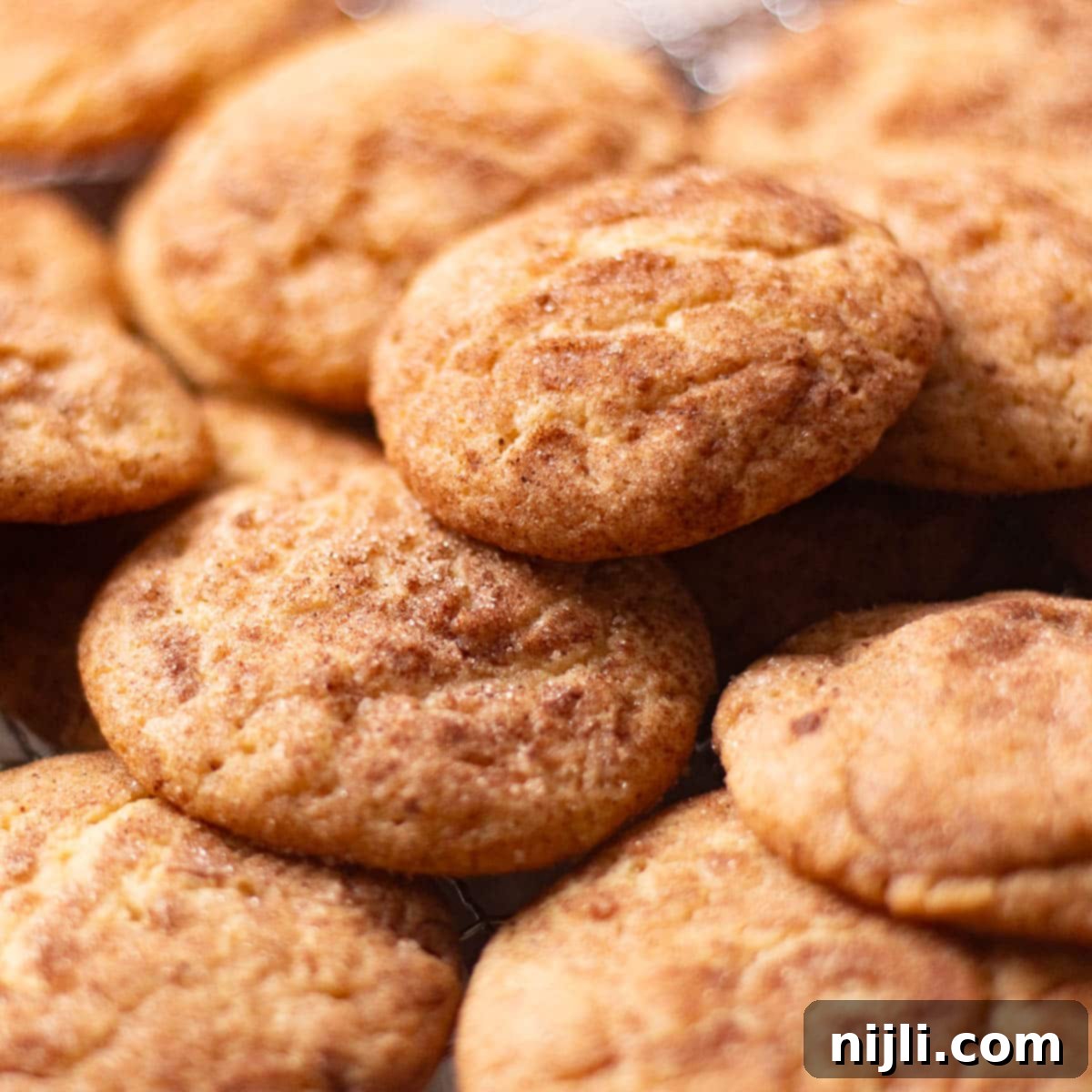The Best Chewy Snickerdoodle Recipe Without Cream of Tartar
Are you craving the classic comfort of snickerdoodle cookies but find yourself without cream of tartar? You’re in luck! This easy snickerdoodle recipe without cream of tartar is guaranteed to become your new go-to. Forget the need for that sometimes-elusive ingredient; these snickerdoodle cookies are perfectly chewy, delightfully tangy, and finished with that irresistible cinnamon-sugar coating. Get ready to bake the best snickerdoodles you’ve ever tasted, all without cream of tartar!
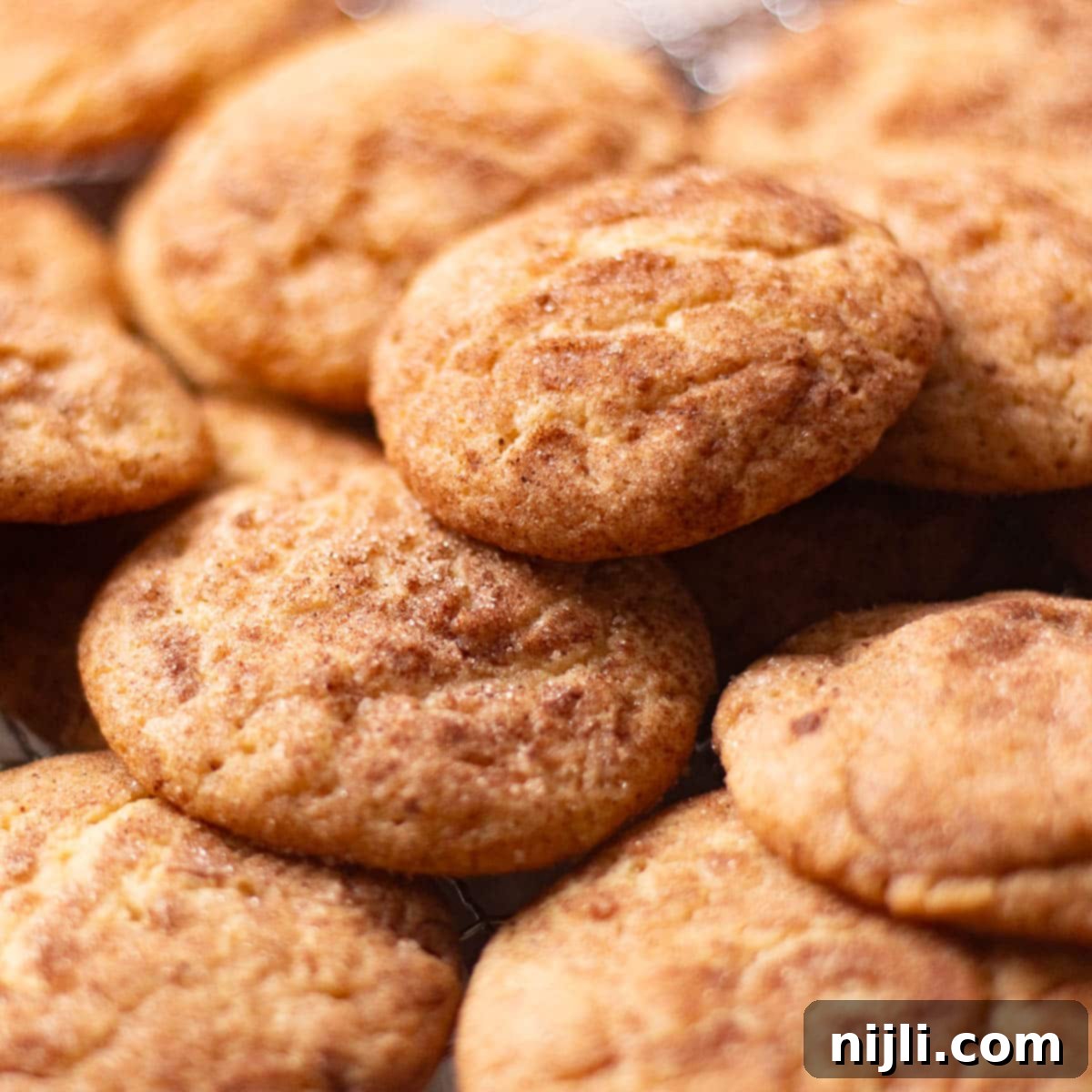
*This post contains affiliate links — as an Amazon Associate I earn from qualifying purchases. Please see my disclosure for details*.
If you adore these soft, chewy snickerdoodles without cream of tartar and are on the hunt for more foolproof cookie recipes, be sure to check out my Brown Sugar Shortbread Cookies, my Ginger Crinkle Cookies, my Cookie Monster Cookies, and my Small Batch Chocolate Chip Cookies with Brown Butter and Sea Salt!
[feast_advanced_jump_to]
Do You Have to Use Cream of Tartar in Snickerdoodle Cookies?
Snickerdoodles are a truly delightful cookie, cherished for their soft, pillowy texture and signature cinnamon-sugar coating. They’re a simple pleasure that brings joy any time of year. Traditionally, the secret to achieving that characteristic chewiness and slightly tangy flavor in a classic snickerdoodle recipe lies in one key ingredient: cream of tartar. However, for many home bakers, cream of tartar isn’t a pantry staple, often leading to a last-minute scramble or a skipped recipe.
If you’re reading this recipe for snickerdoodles without cream of tartar, there’s a good chance you’ve found yourself in that exact situation – needing to bake but lacking that specific ingredient. That’s precisely why this easy snickerdoodle recipe without cream of tartar was created. It delivers all the beloved qualities of a classic snickerdoodle, completely circumventing the need for cream of tartar! No more compromises; just delicious, chewy cookies.
And if you’re a fan of M&Ms, don’t miss my Chocolate Chip M&M Cookies!
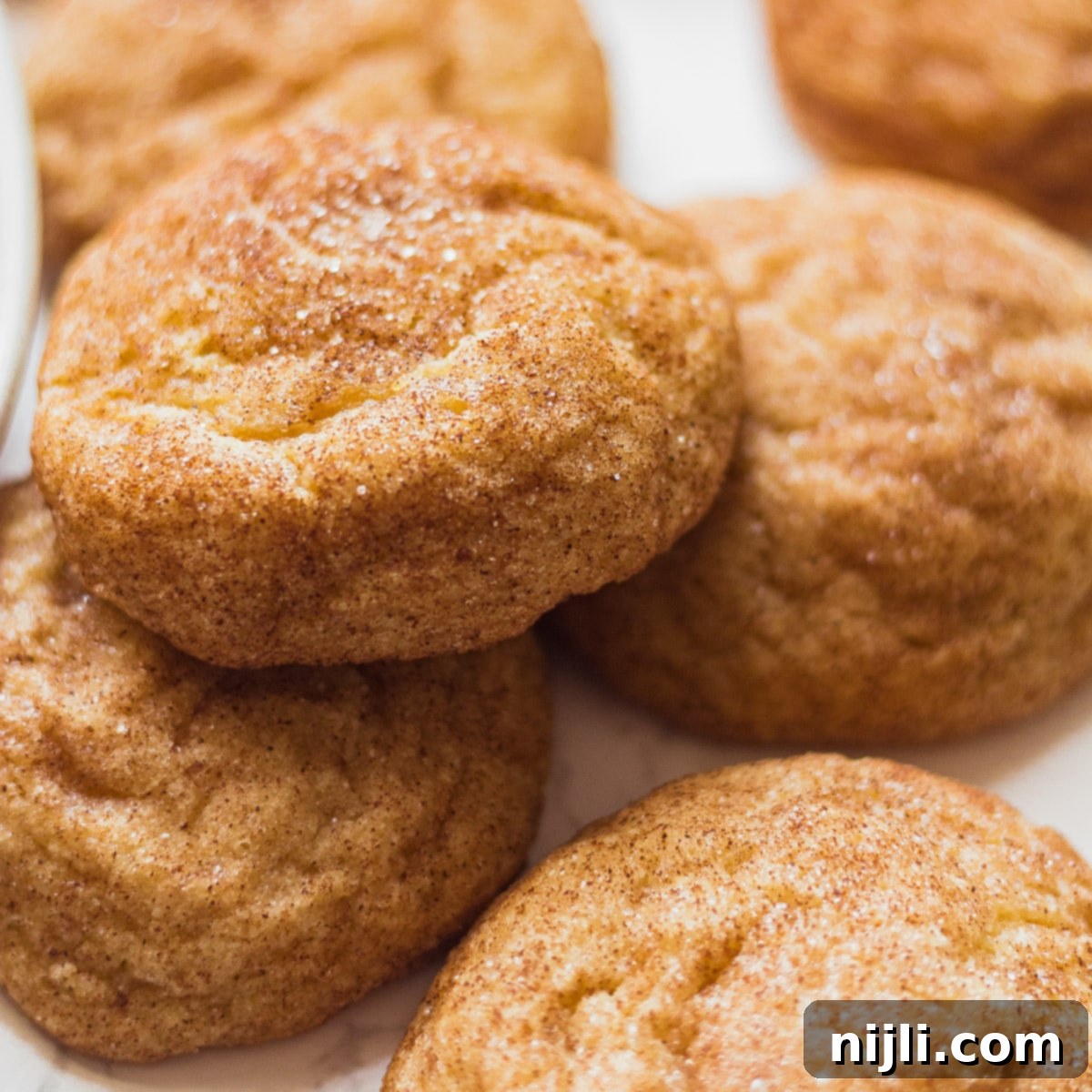
What Exactly is a Snickerdoodle?
A snickerdoodle is a cherished American cookie, recognized for its distinct soft and chewy texture, and its signature coating of cinnamon sugar. While it’s a staple in American baking, particularly during the autumn and holiday seasons, its origins are believed to be German. The name “snickerdoodle” is thought to be a corruption of the German word “Schneckennudel,” which translates to “snail noodle,” a type of pastry.
Flavor-wise, snickerdoodles are like a more dynamic sugar cookie. They boast a rich, sweet base with a delicate tang that sets them apart. This tang, traditionally from cream of tartar, combined with the warmth of cinnamon and sweetness of sugar, creates a truly unique and irresistible flavor profile. They are incredibly satisfying and deeply comforting.
Hungry for more seasonal dessert ideas? Explore my list of the 36 Best Fall Desserts for any cozy gathering!
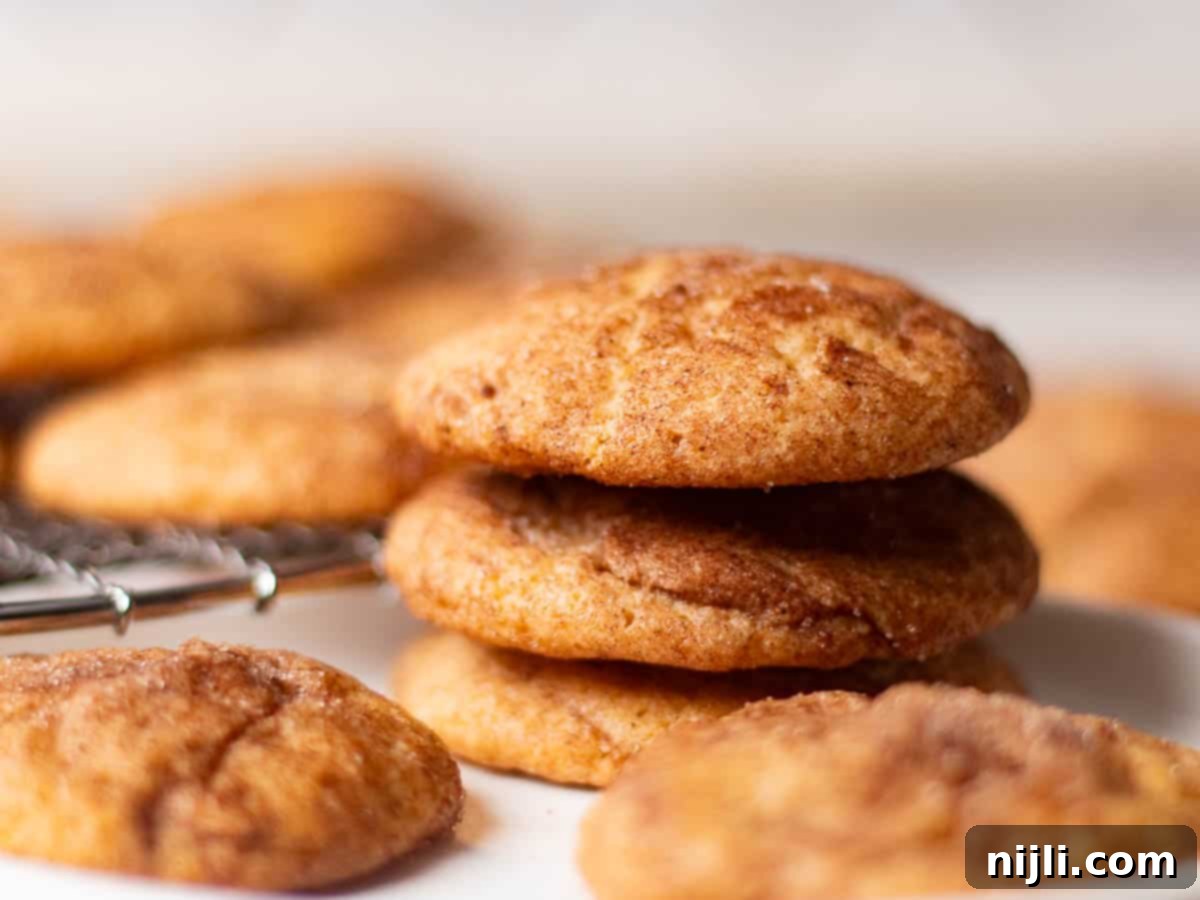
The Science Behind Cream of Tartar in Snickerdoodles
Despite its name, cream of tartar is neither creamy nor related to tartar sauce. It’s actually a dry, acidic powder, chemically known as potassium bitartrate. This fascinating ingredient is a byproduct of the wine fermentation process. In the culinary world, it’s famous for its ability to stabilize whipped egg whites, helping meringues achieve perfect peaks and a smoother consistency.
Its role in snickerdoodles is equally significant. A classic snickerdoodle recipe nearly always calls for cream of tartar because it contributes to both the texture and the unique flavor. It’s often difficult to find a traditional snickerdoodle recipe without cream of tartar, highlighting its perceived importance.

Breaking Down Cream of Tartar’s Function in Baking
So, why is cream of tartar so integral to the traditional snickerdoodle? It serves two primary functions in the cookie’s chemistry and flavor profile:
- Leavening and Texture: Cream of tartar is an acidic component. When it reacts with baking soda (a base), it produces carbon dioxide gas, which gives the cookies their characteristic “puff” and contributes to their soft, chewy texture. This reaction is crucial for the cookie’s rise without making it cakey.
- Tangy Flavor: It imparts a distinctive, slightly sour or tangy flavor that is a hallmark of snickerdoodles. Without this tang, the cookies would taste more like a standard sugar cookie, losing their unique appeal.
- Preventing Sugar Crystallization: Cream of tartar also plays a role in preventing sugar from crystallizing too much, which helps achieve that desired chewy rather than crispy texture. It ensures the interior remains tender and moist.
However, the good news is that you absolutely can achieve these desirable traits in snickerdoodles without cream of tartar! My recipe proves that you don’t need this specific ingredient to create a truly outstanding cookie.
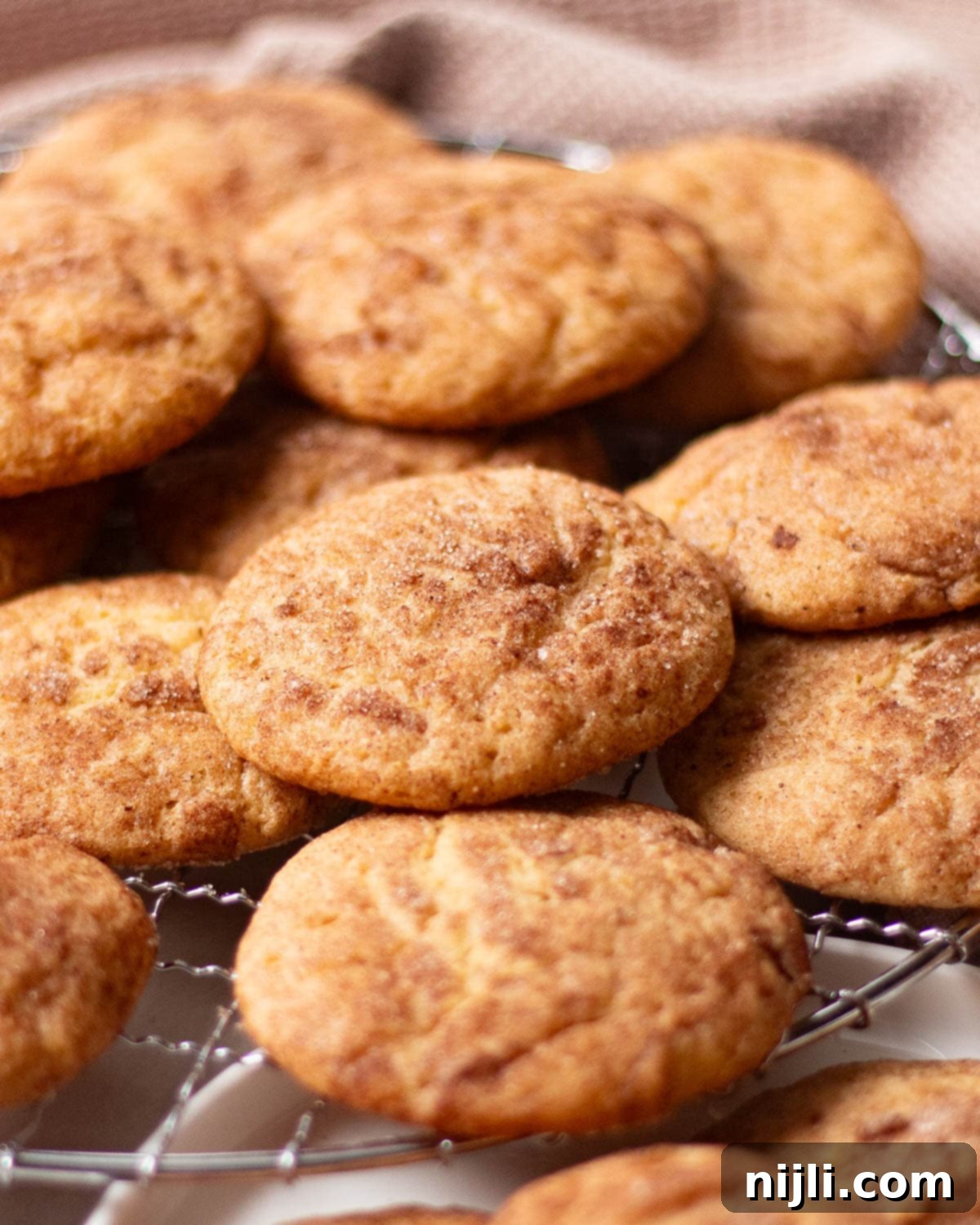
My Secret Substitutes for Cream of Tartar in Snickerdoodles
No cream of tartar on hand? No problem! This easy recipe cleverly replaces the key functionalities of cream of tartar using common pantry ingredients. To replicate the crucial tanginess, we’re incorporating fresh lemon juice. The acidity of lemon juice reacts with the baking soda to provide the necessary lift and a pleasant tart note, mirroring cream of tartar’s acidic contribution.
Furthermore, we’re adding a bit of cream cheese to the dough. Cream cheese not only enhances the tanginess but also significantly contributes to the cookie’s incredible softness and chewy texture. It adds a richness and moisture that results in a wonderfully thick and tender snickerdoodle. The combination of lemon juice and cream cheese creates chewy, easy snickerdoodles without cream of tartar that truly stand out!
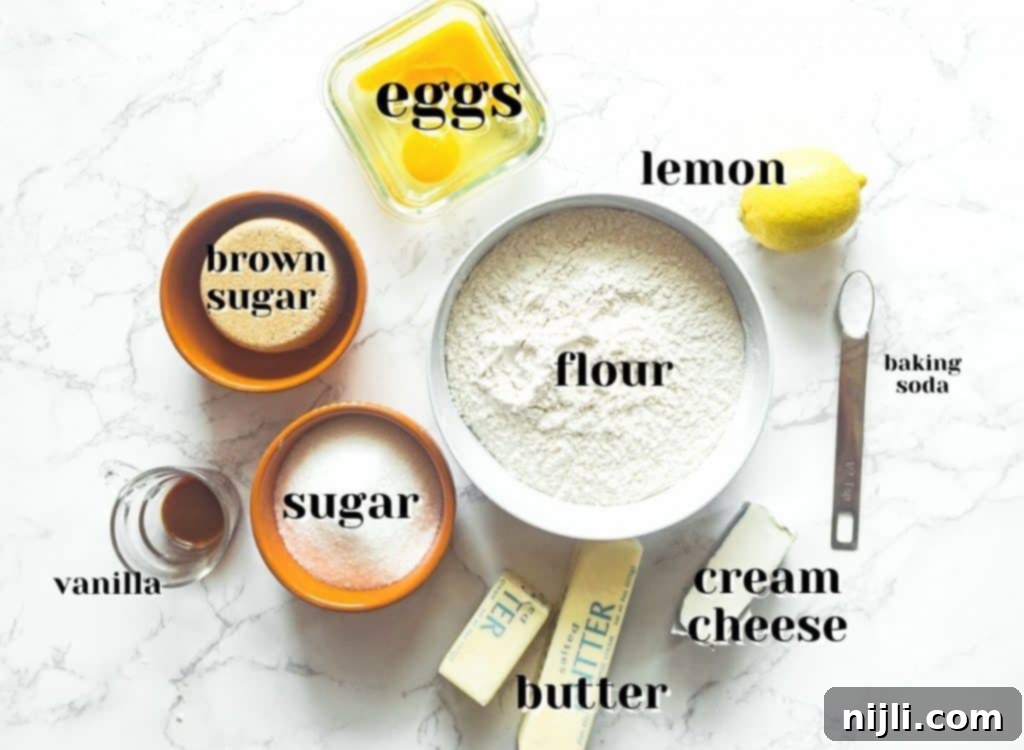
Essential Ingredients for Our No-Cream-of-Tartar Snickerdoodles
Here’s a breakdown of the basic ingredients you’ll need for these delightful chewy snickerdoodle cookies (full measurements are in the recipe card below):
- Butter: For the best texture and flavor, use room temperature butter. Softened butter creams beautifully with sugar, incorporating air for a lighter cookie. I prefer salted butter for an added depth of flavor, but if you opt for unsalted, simply add an extra ¼ teaspoon of salt to your dry ingredients.
- Cream Cheese: This is a star ingredient in our easy snickerdoodle recipe! It replaces some of the tang and richness traditionally provided by cream of tartar. Make sure to use full-fat cream cheese, also softened to room temperature, for the best results in texture and flavor.
- Granulated Sugar and Light Brown Sugar: This combination is key to achieving the perfect balance of sweetness, chewiness, and a slightly crisp edge. Granulated sugar provides crispness, while brown sugar adds moisture and a lovely caramel note, contributing to the chewy texture.
- Eggs: Room temperature eggs are crucial for even baking and proper emulsification with the other ingredients, ensuring a smooth, cohesive dough.
- Vanilla Extract: A high-quality pure vanilla extract elevates the cookie’s flavor. For an extra special touch, consider making your own with my homemade vanilla extract recipe, requiring just two ingredients!
- Lemon Juice: This is our primary substitute for the tangy acidity of cream of tartar. Don’t worry, your snickerdoodles won’t taste overtly lemony; the lemon juice simply provides the necessary tartness and activates the baking soda for lift.
- All-Purpose Flour: Accurate measurement is vital in baking. Always use a kitchen scale to measure your flour by weight, or employ the spoon-and-level method when measuring by volume to avoid over-measuring, which can lead to dry, dense cookies.
- Baking Soda: In this recipe, baking soda is the sole leavening agent. It reacts with the lemon juice and the slight acidity of the cream cheese to give the cookies their rise and characteristic texture, making these delicious snickerdoodles without cream of tartar AND baking powder!
- Ground Cinnamon and Granulated Sugar: This iconic duo creates the essential cinnamon-sugar coating that defines a snickerdoodle. The generous coating adds both flavor and a pleasant textural contrast to the soft cookie beneath.
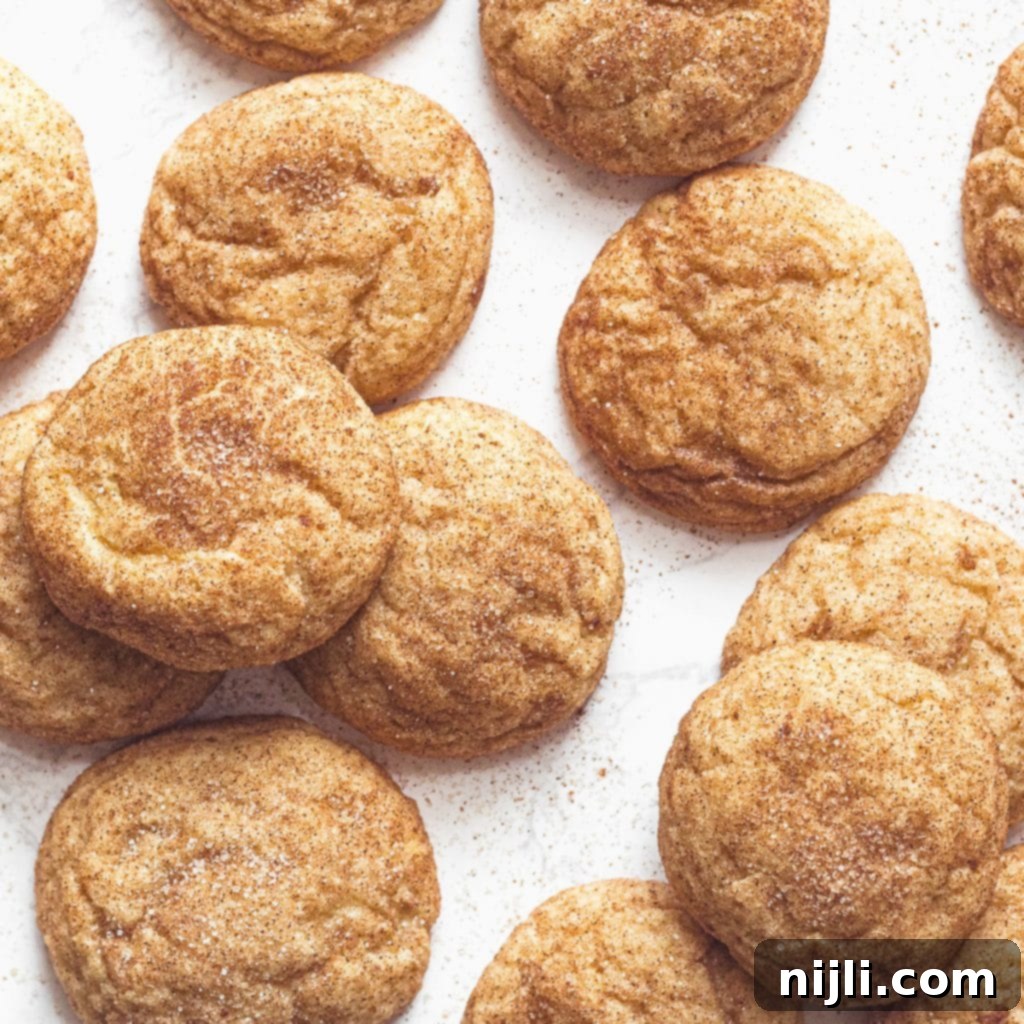
Recommended Equipment for Perfect Snickerdoodle Cookies
One of the many reasons to love this best snickerdoodle recipe is its simplicity! You won’t need any fancy gadgets, just standard cookie-making tools. Here’s what I recommend to ensure success:
- An electric mixer (either a hand mixer or stand mixer) for creaming butter, cream cheese, and sugars. This ensures a light and fluffy base.
- A baking sheet, preferably a light-colored one for even browning.
- A silicone baking liner or parchment paper to prevent sticking and promote even baking.
- A small cookie scoop to ensure uniform cookie size, which leads to consistent baking and a professional look.
- A kitchen scale for accurately measuring flour and other dry ingredients by weight, crucial for consistent results.
- And of course, a wire rack to cool your delicious chewy snickerdoodle cookies, allowing them to set properly and prevent sogginess.
Step-by-Step Instructions for Easy Snickerdoodle Cookies
You’ll find detailed, precise instructions for this chewy cookie recipe in the recipe card below, but here’s a quick overview of the basic steps to create the best snickerdoodle cookies without cream of tartar:
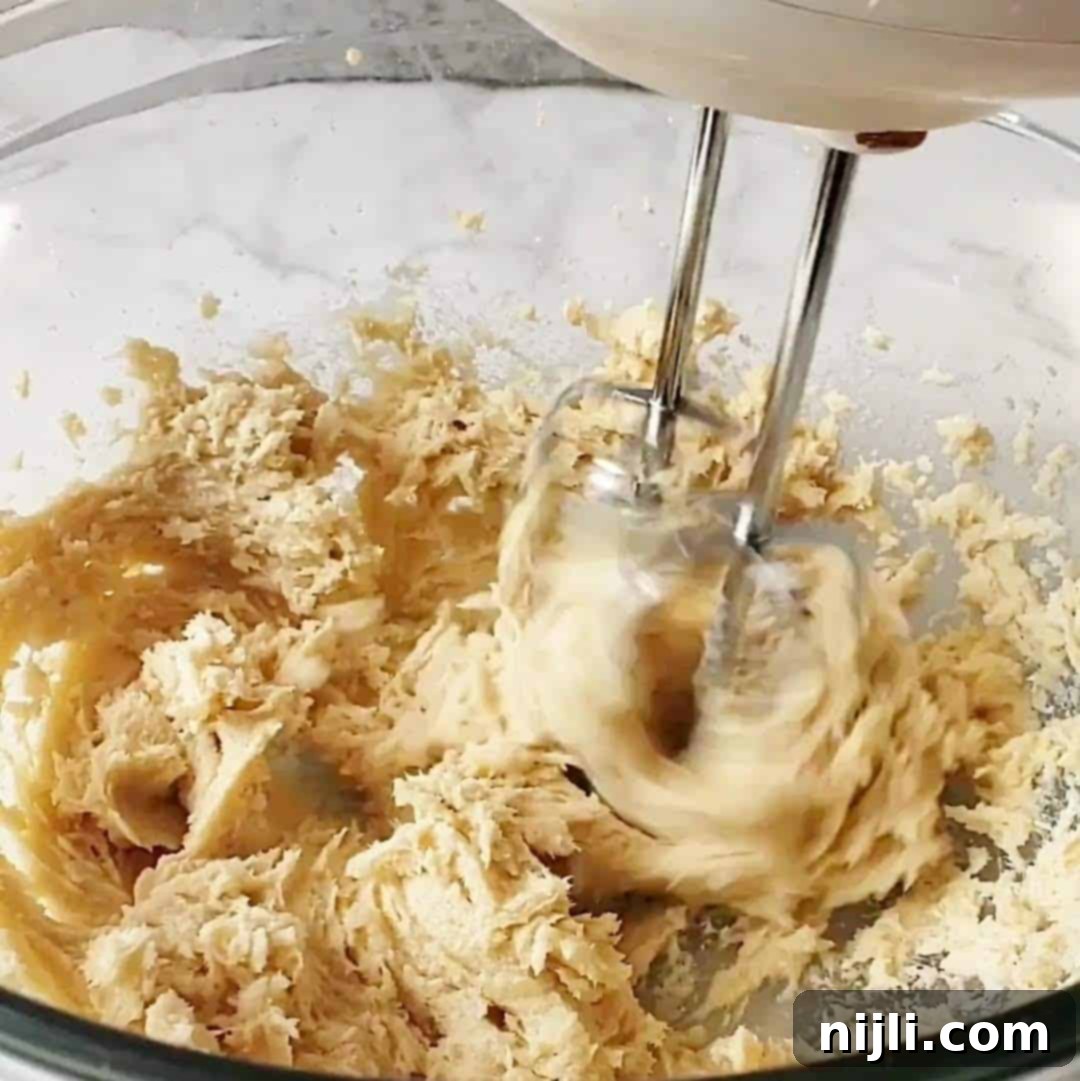
Step 1: Cream Wet Ingredients. In a large mixing bowl, use an electric mixer to cream together the softened butter, cream cheese, granulated sugar, and light brown sugar until the mixture is light and fluffy.
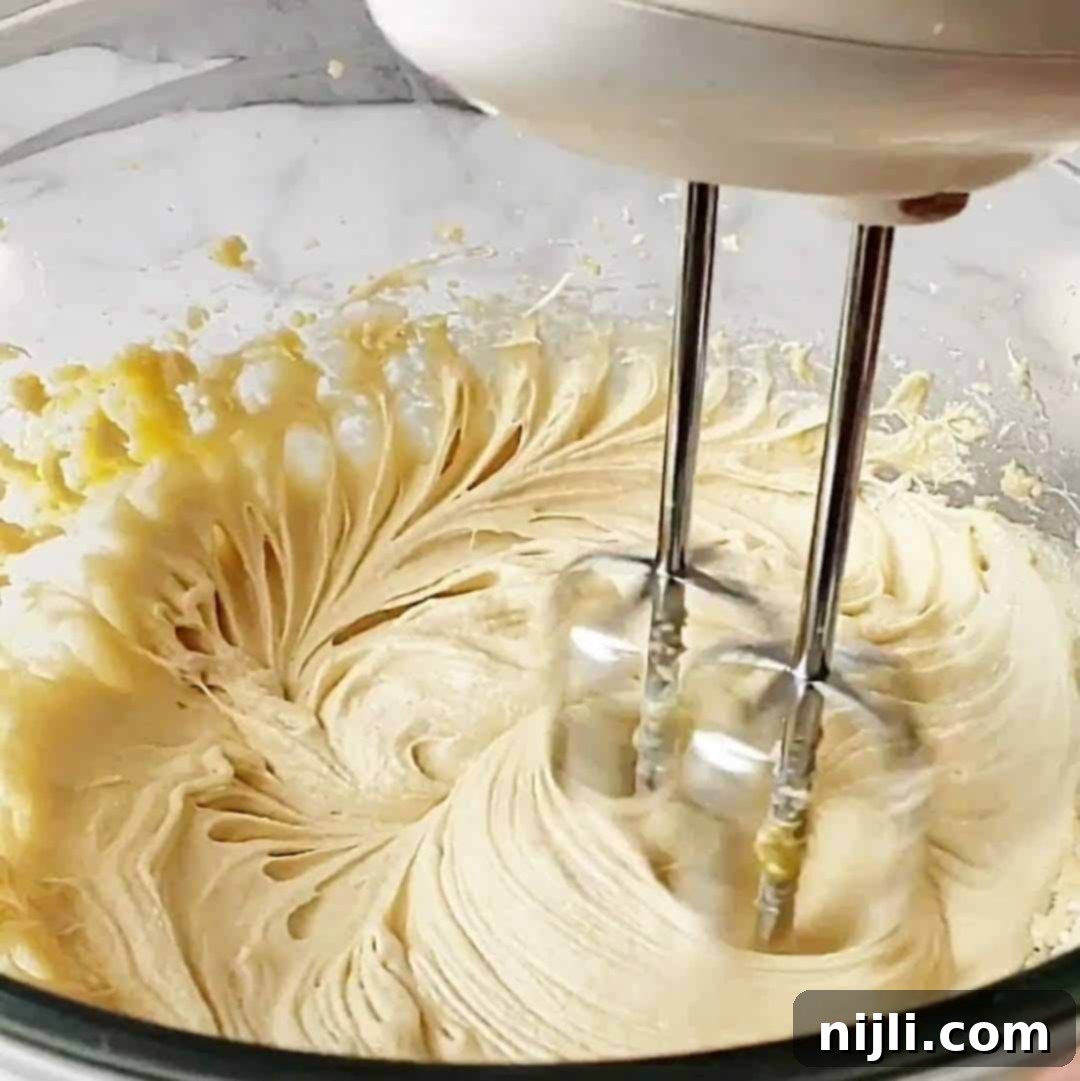
Step 2: Add Eggs and Flavorings. Beat in the room temperature eggs one at a time, followed by the vanilla extract and lemon juice. Continue mixing until everything is well combined and smooth.
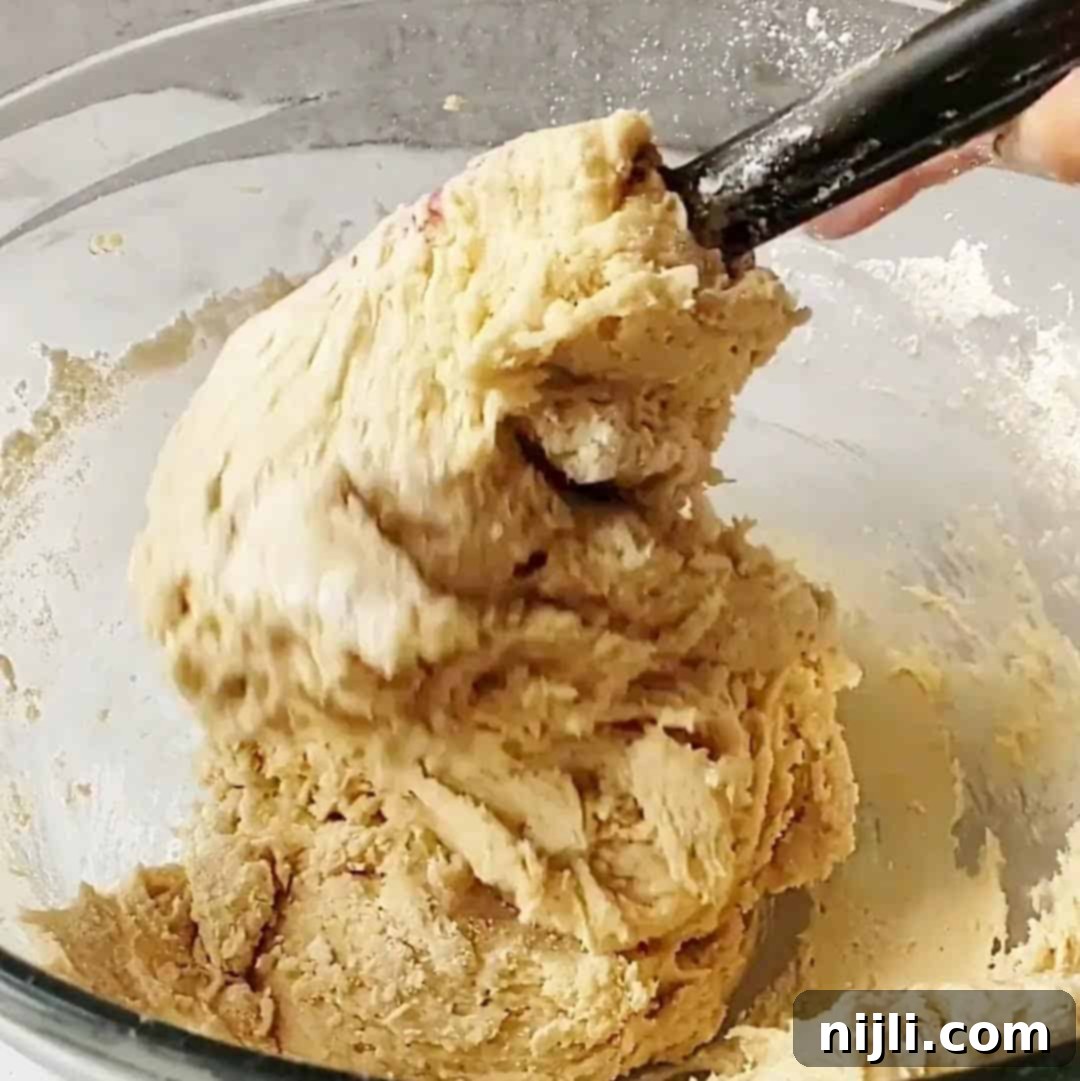
Step 3: Incorporate Dry Ingredients. In a separate bowl, whisk together the all-purpose flour and baking soda. Gradually add this dry mixture to the wet ingredients, mixing on low speed until a soft dough forms. Be careful not to overmix!
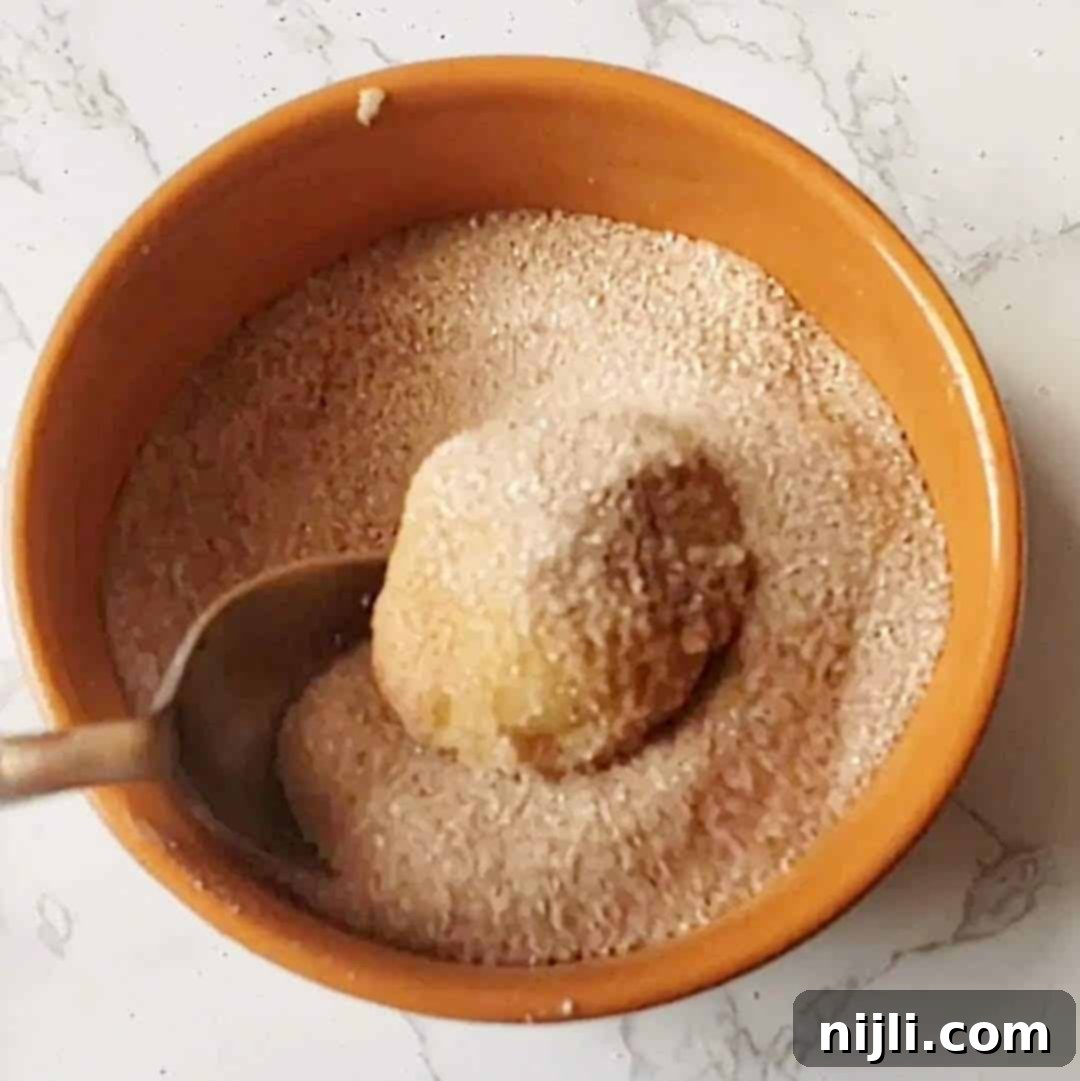
Step 4: Coat and Bake. In a small bowl, combine cinnamon and granulated sugar for the topping. Scoop dough balls, roll them generously in the cinnamon-sugar mixture, and place them 2 inches apart on your prepared baking sheet. Bake until golden brown – no chilling needed!
Tips for Success and Frequently Asked Questions About Snickerdoodles
No, cornstarch is not a suitable substitute for cream of tartar in most recipes. While both are powders, cornstarch is a thickening agent that doesn’t offer the acidity or leavening properties that cream of tartar provides, nor does it impart the distinctive tangy flavor.
Thanks to the thoughtful inclusion of lemon juice, these snickerdoodles capture a flavor profile very similar to classic snickerdoodles, complete with that beloved tangy note. The added cream cheese makes them noticeably thicker, softer, and incredibly rich. Essentially, they are a wonderfully tangy version of sugar cookies, elevated by the signature cinnamon sugar coating. They truly are a delicious and satisfying cookie experience!
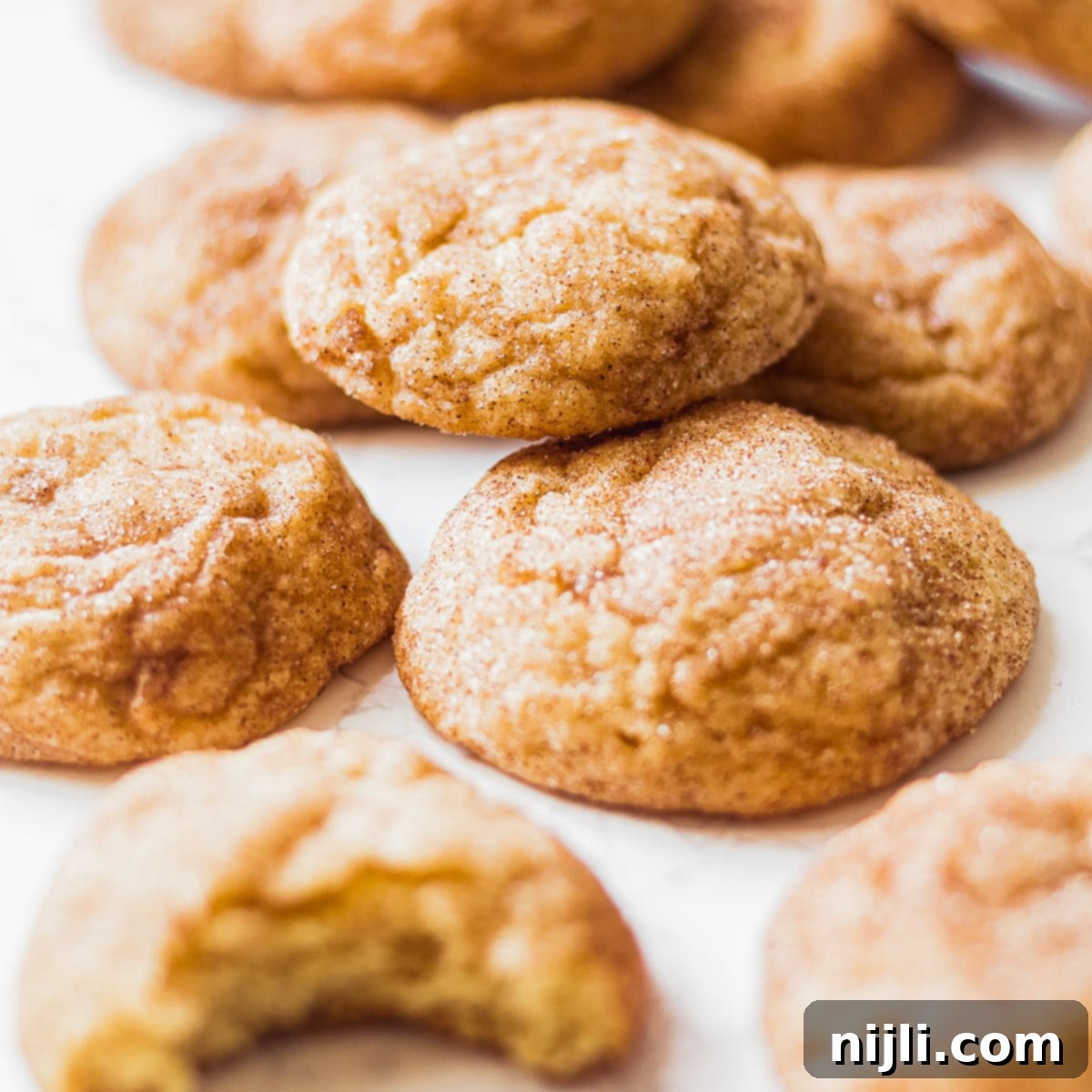
For butter, place the stick on a microwave-safe plate and heat on high for 4 seconds. Flip it to another side and heat for another 4 seconds. Repeat this process until you’ve heated all four sides, for a total of 16 seconds. It should be softened but not melted. To soften cream cheese, remove it from its foil packaging, place it on a microwave-safe plate, and microwave for about 10 seconds, or until it’s soft enough to yield to gentle pressure. These quick methods will ensure your ingredients are perfectly ready for this easy snickerdoodle cookie recipe!
This recipe is designed to yield soft, slightly thick snickerdoodles, so they won’t spread extensively. If yours are too thick or haven’t flattened enough, it could be due to over-measuring flour. Too much flour makes the dough stiff and prevents spreading. Always measure flour by weight for accuracy. If you prefer a flatter cookie, you can gently press down on the dough balls with the palm of your hand or a spatula before baking.
While not strictly necessary for this recipe, if you desire a cookie that spreads a bit more and has a thinner profile, you can gently press an indent into the center of each dough ball before placing them in the oven. This encourages them to flatten out more as they bake.
These delicious cookies are best stored at room temperature in an airtight container for up to two days. For longer storage, you can freeze them in a heavy-duty freezer bag for up to two months. Thaw at room temperature when ready to enjoy.
This easy snickerdoodle recipe, with the inclusion of cream cheese, is designed to stay wonderfully soft. If your snickerdoodles turn out hard, it’s typically due to one of a few common baking mistakes: over-mixing the dough (which develops too much gluten), adding too much flour (always measure by weight!), or over-baking the cookies. Keep a close eye on them in the oven and pull them out as soon as the edges are set and the centers still look slightly soft.
If you simply omit cream of tartar from a traditional snickerdoodle recipe without providing any substitutes, you’ll likely end up with cookies that lack their characteristic tang and chewiness. They might be flatter, less soft, and taste more like a plain sugar cookie. This is why our recipe specifically includes lemon juice and cream cheese to replace those vital elements.
- Cookies Spreading Too Much: This could be due to overly soft butter or cream cheese, not enough flour (ensure accurate measurement), or an oven that isn’t hot enough. Try chilling the dough for 15-30 minutes before rolling and baking.
- Cookies Not Spreading Enough: Too much flour is the most common culprit. Also, make sure your butter and cream cheese are truly at room temperature. If they’re too cold, the dough will be stiff.
- Dry or Crumbly Dough: Again, too much flour is often the issue. Ensure accurate measuring. Also, make sure your butter and cream cheese are softened correctly.
- Cinnamon-Sugar Coating Falls Off: Ensure the dough balls are slightly tacky when you roll them. Roll them generously and firmly to help the coating adhere.
More Cookie Recipes You’ll Love!
- Brown Sugar Shortbread Cookies Recipe
- Small Batch Chocolate Chip Cookies with Brown Butter and Sea Salt
- Oatmeal Cranberry Pecan Cookies
- Peanut Butter and Jelly Thumbprint Cookies
- Ginger Crinkle Cookies
10 Cozy Recipes. No Stress. All the Fall Flavor.
Let’s make this your easiest, coziest baking season yet. Inside this ebook, you’ll get:
- 10 simple, foolproof fall dessert recipes
- Cozy flavors like pumpkin, chai, apple, and brown butter
- Step-by-step instructions made for beginners and busy bakers
- Bonus: fall flavor pairing guide and printable fall grocery list
If you try this easy snickerdoodle recipe, I would love it if you could leave a star review rating and comment below! It’s so wonderful hearing your feedback and seeing your baking triumphs! And don’t forget to share your delicious creations with me by tagging @chenee_today on Instagram!
📖 Recipe: Easy Snickerdoodles Without Cream of Tartar
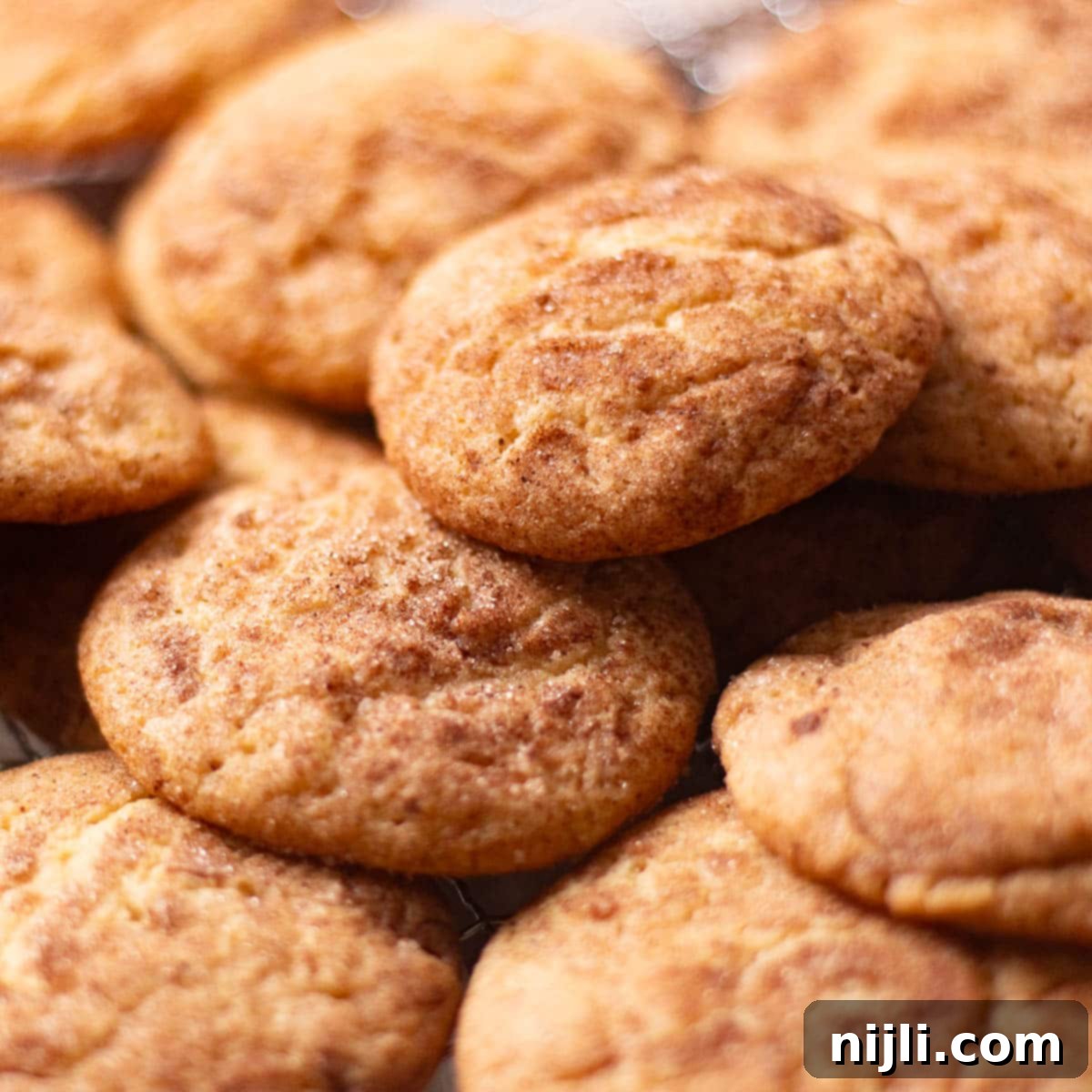
Easy Snickerdoodle Recipe Without Cream of Tartar
Pin Recipe
Rate Recipe
Save Recipe
Saved!
Equipment you may need
-
food scale
-
¾ sheet baking pan
-
silicone baking mat
-
small cookie scoop
-
cooling rack
-
measuring cups and spoons
-
mixing bowls
-
hand mixer
Ingredients
- ¾ cup (170 g) salted butter – room temperature
- 2 oz (57 g) cream cheese – softened
- ⅔ cup (133 g) granulated sugar
- ⅔ cup (147 g) light brown sugar – packed
- 2 large eggs – room temperature
- 2 teaspoon (10 ml) pure vanilla extract
- 1 teaspoon (5 ml) lemon juice
- 2 ½ cups (313 g) all-purpose flour – Be sure to use a kitchen scale to measure by weight, or use the spoon-and-level method to measure by volume.
- ½ teaspoon (2 g) baking soda
Topping
- ½ cup (100 g) granulated sugar
- 3 tablespoon (24 g) ground cinnamon
Instructions
-
Preheat oven to 350°F (175°C). Line a large baking sheet with parchment paper or a silicone liner.
-
In a large mixing bowl, cream together the softened cream cheese, butter, granulated sugar, and light brown sugar until the mixture is smooth, light, and fluffy (about 2-3 minutes with an electric mixer).¾ cup salted butter, 2 oz cream cheese, ⅔ cup granulated sugar, ⅔ cup light brown sugar
-
Beat in the room temperature eggs one at a time, mixing well after each addition. Stir in the pure vanilla extract and lemon juice until fully combined and the mixture is smooth.2 large eggs, 2 teaspoon pure vanilla extract, 1 teaspoon lemon juice
-
In a separate medium bowl, whisk together the all-purpose flour and baking soda. Gradually add this dry ingredient mixture to the wet ingredients, mixing on low speed until a soft dough forms. Be careful not to overmix the dough, as this can lead to tougher cookies.2 ½ cups all-purpose flour, ½ teaspoon baking soda
-
In another small shallow bowl, stir together the granulated sugar and ground cinnamon for the topping.½ cup granulated sugar, 3 tablespoon ground cinnamon
-
Use a small cookie scoop to portion out cookie dough balls. Roll each dough ball generously in the cinnamon-sugar mixture a few times to ensure a thick, even coating. You may need to gently re-form the dough into a neat ball after rolling.
-
Place the coated dough balls 2 inches apart on your lined baking sheet. Bake for 12-14 minutes in the preheated oven, or until the edges are lightly golden and the centers still look slightly soft. The cookies will continue to set as they cool.
-
Allow the snickerdoodles to cool on the baking sheet for a few minutes before transferring them to a wire rack to cool completely. Enjoy these perfectly chewy snickerdoodles without cream of tartar!
Video
Notes
Nutrition
Nutrition Disclaimer
PIN this chewy snickerdoodle recipe for later!

